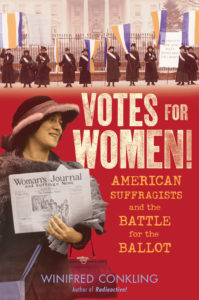Hey YA Fans!
Today I’ve got a passionate letter of love and support for teens that, while not 100% about books, is absolutely about books and reading.
“What’s Up in YA?” is sponsored by The Final Six by Alexandra Monir from EpicReads.
 Perfect for fans of Illuminae and The Martian, this action-packed YA novel set in the near future will take readers out of this world and on a quest to become one of six teens sent on a mission to Jupiter’s moon. When Leo, an Italian championship swimmer, and Naomi, an Iranian-American science genius from California, are drafted into the International Space Training Camp, their lives are forever altered. After erratic climate change has made Earth a dangerous place to live, the fate of the population rests on the shoulders of the final six, who will be scouting a new planet. Intense training, global scrutiny, and cutthroat opponents are only a few of the hurdles the competitors must endure.
Perfect for fans of Illuminae and The Martian, this action-packed YA novel set in the near future will take readers out of this world and on a quest to become one of six teens sent on a mission to Jupiter’s moon. When Leo, an Italian championship swimmer, and Naomi, an Iranian-American science genius from California, are drafted into the International Space Training Camp, their lives are forever altered. After erratic climate change has made Earth a dangerous place to live, the fate of the population rests on the shoulders of the final six, who will be scouting a new planet. Intense training, global scrutiny, and cutthroat opponents are only a few of the hurdles the competitors must endure.
A few weeks back, I wrote a short review about Winifred Conkling’s Votes for Women, a new nonfiction YA book about the Suffragist Movement. Today, Winifred is here to talk a bit about the women in that movement, and how we should look to the teens walking out of their classrooms as change-makers in a similar regard. This piece is perfect for thinking both about how we look at today’s teenagers, but also how we think about the teenagers we’re seeing in YA literature. Especially as YA literature has become more inclusive and taken on more contemporary cultural issues — whether in realistic fiction or speculative — these observations and considerations are worth sitting with.
Not to mention that it’s worth talking about feminism during Women’s History Month in any event.
While Winifred and I share a publisher, I’ve found Votes for Women and her previous Radioactive: How Irene Curie and Lise Meitner Revolutionized Science and Changed The World to be two must-read YA nonfiction titles for readers craving women’s history and feminism.
But without further ado, here’s Winifred!
 Last week, students across the country walked out of their schools to protest in support of stronger gun-control laws. This time, the call for gun reform comes in response to the murder of seventeen students at Marjory Stoneman Douglas High School in Parkland, Florida, on Valentine’s Day. We all know that this is just the most recent in a painfully long history of school shootings.
Last week, students across the country walked out of their schools to protest in support of stronger gun-control laws. This time, the call for gun reform comes in response to the murder of seventeen students at Marjory Stoneman Douglas High School in Parkland, Florida, on Valentine’s Day. We all know that this is just the most recent in a painfully long history of school shootings.
Last Wednesday marked the one-month anniversary of the South Florida shooting. Students and teachers walked out of their schools at 10 A.M. for 17 minutes – one minute for each of the lives lost in the massacre.
Thousands of students marched out of their classrooms to honor the dead and call for stronger gun-safety legislation. Marches on Washington are planned for March 24 and April 20, as well, and individual student bodies are making plans for their own walkouts and protests. There will be reports on the evening news and countless selfies of protesters posted on Facebook and Instagram, but it will be too easy for legislators to ignore these calls for change one more time. Success will require a sustained campaign of walkouts and protests — perhaps over months and years rather than a day or two a month. We know this by looking at the long history of protesting in the U.S. And in light of women’s history month, we can look to the suffragists.
On January 10, 1917, Alice Paul and eleven other women stood in front of the gates to the White House in bitter cold. Each of the women carried an oversize cloth banner suspended from an eight-foot pole. They wore hats, gloves, and ankle-length wool coats topped with striped satin sashes. One of the banners read “How long must women wait for liberty?” Another said, “Mr. President, what will you do for woman suffrage?” The others carried banners with the colors of the suffrage movement – purple, gold, and white.
Women stood at their posts daily from 9 am to 1 pm, when another group of volunteers took their place for the second shift, 1 pm to 5 pm. While on duty, the women didn’t talk with one another or with people on the street. Alice Paul knew that their silence would make those who saw them feel uncomfortable. She knew the power of silence – and discomfort. The women were called “The Silent Sentinels.”
At the time, protesting was a new idea, and it was considered radical for women to picket on the streets. But it wasn’t just the newness that made the approach successful; it was consistency. The women stuck with the protest, day after day, in good weather and bad. During the campaign, almost two thousand women protested. They were as young as nineteen and as old as eighty. Some marched regularly; other joined the picket line only once or twice. For a time, the picketers were a tourist attraction, and people would ask to hold a banner and pose for a photograph.
As the months passed, the Silent Sentinels went from being a novelty to being a nuisance. Every time President Woodrow Wilson entered or left the White House, he had to face those women. The messages changed regularly, and over time, the words wore him down and helped to change his mind about supporting women’s right to vote.
Starting in June, the Silent Sentinels began to be arrested and jailed. Although the picketers broke no laws, they were sentenced to three days in jail on trumped-up charges of obstructing traffic. (They never left the sidewalk.) By August, some picketers were sentenced to sixty days in the workhouse. In jail the women were fed moldy and worm-infested food. They were force-fed when they started a hunger strike.
It’s time for a new generation of Silent Sentinels to return to Washington and stay a while. This time they can protest in front of the Capitol Building, to be a constant reminder that Congress must have the courage to act in order to make any progress on the issue of gun safety.
The 21st century Silent Sentinels could make their point devastatingly clear by carrying banners with names and faces of the children and young people who died in their classrooms and were shot down on their college campuses. Every time a member of Congress enters the Capitol Building or poses for an interview with a news reporter, let them see a dead child’s face fluttering in the wind, asking for justice. The silence could speak for those who never got the chance to speak for themselves.

Winifred Conkling is an award-winning author of fiction and nonfiction for young readers, including Passenger on the Pearl and, most recently, Votes for Women! American Suffragists and the Battle for the Ballot.
____________________
Thanks for tuning in this week, and we’ll see you again next with a round-up of recent YA talk around Book Riot.
–Kelly Jensen, @veronikellymars on Twitter and Instagram.